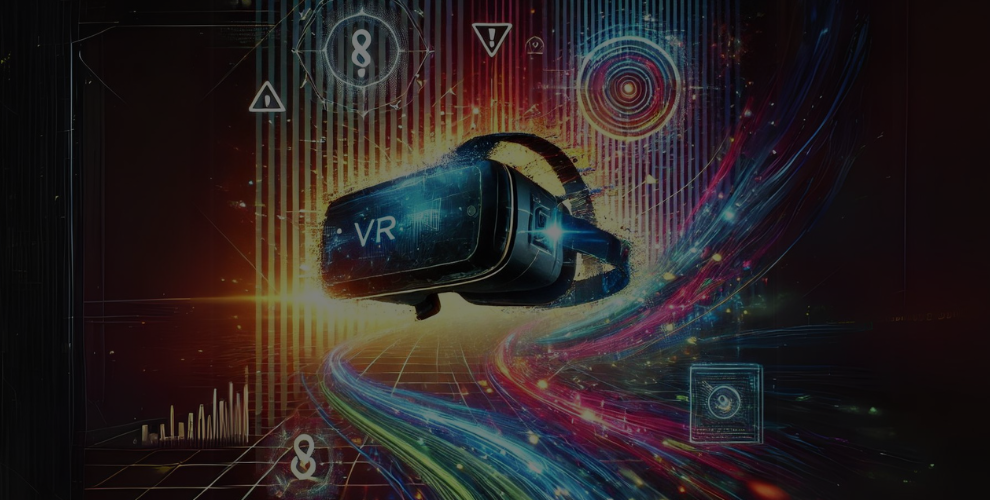
Avoid These Common VR Headset Mistakes
Table of Contents
Introduction
Welcome to WikiGlitz!
We have brought you this amazing blog to help you navigate the world of virtual reality without the common pitfalls.
Virtual reality is an exciting technology that offers immersive experiences like never before. However, many users, especially beginners, often make avoidable mistakes that can hinder their enjoyment and even cause discomfort.
In this article, we will explore the most common VR headset mistakes and provide actionable tips, supported by expert insights, to help you avoid them.
This will ensure a smoother and more enjoyable VR experience.
Key Takeaways:
- Proper VR headset setup and calibration are essential to avoid discomfort and enhance performance.
- Understanding and preventing motion sickness and eye strain are crucial for long-term VR usage.
- Regular maintenance and following best practices will prolong the life of your VR headset and improve its performance.
Skipping the Setup Guide: The First Common VR Headset Mistake
One of the common VR headset mistakes is skipping the setup guide that comes with your VR device. Many users are eager to jump straight into their virtual world and overlook the importance of following the setup instructions carefully. Improper setup can lead to VR headset setup errors that affect your experience, such as poor image quality, tracking issues, and discomfort.
Expert Insight: According to VR industry expert and Oculus co-founder Nate Mitchell, “Skipping the setup guide is like starting a journey without a map. A proper setup is crucial for a seamless VR experience.”
Tip: Always start by carefully following the virtual reality setup guide provided with your headset. This ensures that all components are correctly calibrated and ready for use.
Ignoring VR Headset Calibration: A Critical Error
VR headset calibration issues are another frequent problem that users face. Calibration ensures that the device’s sensors accurately track your movements, providing a smooth and immersive experience. Ignoring calibration or rushing through it can lead to VR headset usage errors like mismatched visuals and inaccurate tracking.
Expert Insight: An article from VRScout highlights that regular recalibration, especially after moving the sensors or headset, can significantly improve tracking accuracy and overall experience.
User Experience Example: Imagine you’re playing a fast-paced game, but your character lags or doesn’t respond correctly because the sensors aren’t calibrated. This not only breaks immersion but can also cause frustration.
Tip: Take your time to properly calibrate your VR headset according to the manufacturer’s instructions. Regular recalibration is also recommended, especially if you notice tracking inaccuracies.
Neglecting Comfort: Avoiding Discomfort in VR
Discomfort is a significant barrier to enjoying VR, and it’s often due to improper setup or prolonged use without breaks. How to avoid VR headset discomfort is a common concern, particularly for beginners.
Expert Insight: Dr. Michael Madary, an expert in VR ethics and health, suggests, “Wearing a VR headset that’s not properly adjusted can lead to physical discomfort, including headaches and neck strain, which can easily be avoided with correct setup.”
User Experience Example: If your headset is too tight or too loose, you might find yourself constantly adjusting it, which can detract from your VR experience. Over time, this can cause strain and discomfort.
Tip: Adjust the fit of your VR headset so it sits comfortably on your head without being too tight. Use the provided padding and adjust the straps as needed. Also, take regular breaks to avoid strain on your eyes and prevent motion sickness.
Overlooking the Impact of Motion Sickness: A Common Issue
Avoiding motion sickness in VR is crucial, especially for those new to virtual reality. Motion sickness occurs when there’s a disconnect between what you see and how your body feels. It can lead to nausea, dizziness, and discomfort, making the VR experience unpleasant.
Expert Insight: The Mayo Clinic advises VR users to gradually build their tolerance to VR environments to prevent motion sickness. Starting with short sessions and slowly increasing the duration can help your body adapt.
User Experience Example: A first-time VR user might feel fine for the first few minutes but then suddenly experience dizziness. This can turn an exciting session into an uncomfortable ordeal.
Tip: Start with shorter VR sessions and gradually increase your time as your body adjusts. Also, choose VR content that is less likely to cause motion sickness, such as stationary experiences or slower-paced games.
Failing to Maintain Your VR Headset: Caring for Your Investment
Proper maintenance is essential for the longevity of your VR headset. Many users neglect regular cleaning and maintenance, leading to common issues with VR headsets like lens fogging, dirt accumulation, and reduced performance.
Expert Insight: A maintenance guide from HTC Vive recommends regular cleaning of lenses and external surfaces to ensure longevity and optimal performance. They also suggest using a microfiber cloth specifically designed for VR lenses.
User Experience Example: Over time, dust and oils from your skin can accumulate on the lenses, causing blurry visuals. This not only diminishes your experience but can also lead to eye strain.
Tip: Regularly clean the lenses with a microfiber cloth and store the headset in a dust-free environment. Following the manufacturer’s guidelines on how to care for a VR headset will keep your device in top condition.
Ignoring Eye Strain: Protecting Your Vision
Preventing eye strain in VR is a critical consideration, especially for frequent users. Extended periods in virtual reality can cause eye fatigue, leading to discomfort and long-term vision issues.
Expert Insight: According to the American Academy of Ophthalmology, prolonged exposure to VR can lead to digital eye strain, particularly if the headset is not properly adjusted for each user’s eyes.
User Experience Example: If you use VR for extended periods without breaks, you might experience headaches or blurry vision, which are signs of digital eye strain.
Tip: Adhere to the 20-20-20 rule, which states that you should look at anything 20 feet away for 20 seconds every 20 minutes. This promotes eye health and lessens eye strain.
Disregarding VR Headset Safety Tips: Ensuring Safe Usage
Safety is paramount when using VR headsets. Virtual reality safety tips are often overlooked, leading to accidents or injuries. Users might trip over cables, knock into objects, or strain themselves by staying in awkward positions for too long.
Expert Insight: Consumer Reports advises that users set up a designated play area free from obstacles and use a VR mat to define their boundaries for safer gameplay.
User Experience Example: A user who doesn’t clear their play area might trip over a coffee table or bump into a wall, leading to possible injury and damage to the VR equipment.
Tip: Ensure your play area is clear of obstacles and use a VR mat to define your boundaries. Also, be mindful of your surroundings, even when immersed in a virtual world.
Poor VR Headset Performance: Troubleshooting and Enhancements
Experiencing poor performance can ruin your VR experience. Issues like lag, poor graphics, or slow loading times can be frustrating. Improving VR headset performance is often a matter of proper setup and regular maintenance.
Expert Insight: PC Gamer suggests optimizing your PC’s settings, ensuring your graphics card drivers are up-to-date, and closing unnecessary background applications to enhance VR performance.
User Experience Example: If your VR experience is laggy or the visuals are subpar, it could be due to outdated drivers or too many background processes running on your computer.
Tip: Keep your software and drivers up-to-date, and ensure your PC or console meets the VR headset’s system requirements. Regularly check for updates and optimize your settings for the best performance.
Misunderstanding the Importance of Audio: Enhancing Immersion
Sound plays a crucial role in VR immersion. Many users focus solely on visuals, overlooking the importance of high-quality audio. This can detract from the overall experience.
Expert Insight: According to Audio-Technica, quality audio can significantly enhance immersion in VR by providing spatial awareness and making the virtual environment more realistic.
User Experience Example: Using low-quality headphones can make it harder to hear important audio cues, like footsteps in a game, which can break immersion and affect gameplay.
Tip: Invest in a good pair of headphones or use the built-in audio features of your VR headset to fully immerse yourself in the virtual environment.
Overlooking Environmental Factors: Optimizing Your Space
The environment where you use your VR headset significantly impacts your experience. Virtual reality setup errors can often be traced back to poor lighting, limited space, or cluttered surroundings.
Expert Insight: The Verge suggests setting up your VR space in a well-lit room with plenty of space to move around. Good lighting helps with tracking accuracy, and a spacious area prevents accidents.
User Experience Example: Poor lighting can cause tracking issues, leading to laggy or inaccurate responses in your VR environment. A cluttered space can result in tripping hazards.
Tip: Choose a well-lit, spacious area with minimal furniture to avoid collisions and ensure optimal tracking.
Conclusion
We’ve brought you this insightful blog to help you avoid the most common VR headset mistakes, ensuring you have a safe, enjoyable, and immersive experience.
By following these tips, supported by expert insights, you can enhance your virtual reality sessions, minimize discomfort, and get the most out of your VR headset.
Remember, proper setup, regular maintenance, and mindfulness of safety and comfort are key to a successful VR experience.
Follow WikiGlitz for more such insights and stay ahead in the world of technology!
FAQs
What are the most common VR headset setup errors?
The most common setup errors include incorrect calibration, poor fit, and skipping the setup guide, leading to discomfort and performance issues.
How can I avoid motion sickness while using a VR headset?
Start with short sessions, choose less intense VR experiences, and ensure proper calibration to minimize motion sickness.
What should I do if my VR headset is causing eye strain?
Follow the 20-20-20 rule to reduce eye strain and take regular breaks. Ensure your headset is properly calibrated and fits well.
How often should I clean my VR headset?
Regularly clean your VR headset, especially the lenses, after each use to maintain clarity and prevent dirt buildup.
What are some best practices for using a VR headset safely?
Ensure a clear play area, use a VR mat to define your space, and be mindful of your surroundings to avoid accidents.
Want to keep up with our blog?
Our most valuable tips right inside your inbox, once per month.
Error: Contact form not found.
WikiGlitz Team
Welcome to WikiGlitz, your ultimate destination for tech insights and innovation. Our expert team is dedicated to delivering free resources and professional advice on various technology topics, including Artificial Intelligence, Cyber Security, Cloud Computing, and more. We strive to empower our readers with up-to-date information and practical guidance, ensuring you stay ahead in the rapidly evolving tech landscape. At WikiGlitz, we are passionate about making complex technology accessible to everyone. Our team of seasoned experts curates content that is both informative and engaging, helping you understand and leverage the latest tech trends. Whether you're a tech enthusiast or a professional, WikiGlitz is your go-to source for reliable, expert-driven content. Join us on this journey to explore and embrace the future of technology.





